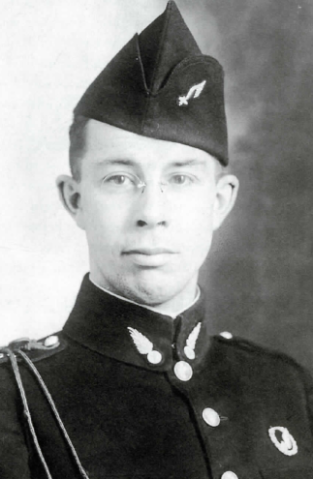Three years ago I wrote the book, Lost Eagles (University of Michigan Press), about Frederick Zinn from my hometown of Battle Creek Michigan. On this Veteran’s Day, I thought it would be worth revisiting his story.
Fred was born in Galesburg Michigan and graduated from the University of Michigan. For his graduation, he decided to tour Europe. His timing wasn’t great – it was the summer of 1914, the summer war broke out. Fred eventually found himself in Paris at the outbreak of hostilities.
Along with 42 other American’s, Fred joined the French Foreign Legion. It was three years before the United States would declare war on Germany. Fred was the first American to capture a prisoner of war while fighting for the Legion. He was wounded and returned to Battle Creek Michigan for a few months. When he returned he (and several other prominent Americans) transferred from the Foreign Legion into the French Air Service.
Fred was flying for France starting in 1915. He became America’s first aerial combat photographer and was one of the first members of the Lafayette Flying Corps – a grooming organization for men that would be the heart of the American Air Service. Fred was promoted several times, and had vast air combat service when the US declared war in 1917. Fred was the first member of the Americans transferred into the American Air Service at the personal behest of Billy Mitchell.
During the remainder of the war he established the first aviation reconnaissance and photography training programs, and headed up the personnel section – personally selecting replacement pilots for the front. By the time the war had ended, Fred Zinn of Western Michigan had seen more combat and had been at war longer than almost any other human being.
When Armistice was signed on the 11th hour of the 11th day of the 11th month of 1918, Fred Zinn should have been the first man to go home. God knows he had earned it. But Fred Zinn didn’t see his work as done. He had sent nearly 200 men to the front during the war who had not come home. Fred Zinn proposed something that had never been tried by the US Army. He proposed going and finding the missing airmen. The Army allowed it. While most servicemen went home to parades, Fred went onto Berlin to work with former enemies like Ernst Udet, the locate the bodies or personal remains of the missing American aviators.
With a staff of four, by the end of 1919, Fred had tracked down the remains or effects of 95% of the missing aviators. He returned home to the family business, milling grain for Kelloggs Corporation.
Fred served in the reserves in the between-the-war years. When WWII broke out, Fred went to Washington to meet with Hap Arnold about setting up a system to track the thousands of missing aviators that were going to be lost in the looming war. It took some convincing, but Fred was able to put together the process and establish the Missing Air Crew reporting system – signed off by General George Marshall himself in a scene eerily reminiscent of Saving Private Ryan.
Fred was offered a Colonel rank in the Air Force but he insisted that he be in charge of searching for missing aviators. When the Air Force would not guarantee him that role, he turned to a former friend from the Foreign Legion who got him into the OSS, the predecessor to the CIA. Using a cover provided by the Kellogg Foundation, Fred Zinn became a counterintelligence spy for the US government. His cover was the mission he wanted to perform – searching for missing aviators. At the age of 50 Fred Zinn went back to basic training and then off to war again.
During WWII Fred worked right at the front lines, personally overseeing the recovery of hundreds of missing men and bringing closure to their loved ones. Not only did he do this, but he performed counterintelligence missions as well.
He came home just before the end of the war. Fred went on to represent Calhoun County in the Michigan House of Representatives. After his death, an airshow was held in his honor at Kellogg Airport, a facility that Fred helped in the design of.
Fred never drew attention to himself, yet he stands out as one of Michigan’s most decorated and illustrious WWI aviators and veterans. Battle Creek never named a park or a street after him, yet he was a true patriot who severed with distinction in two world wars. No statues stand to commemorate this humanitarian. His pioneering work continues on today every time the US military recovers a missing man or woman overseas. So please join me on this Veteran’s Day to remember a great aviator, and a great man – Frederick Zinn.


Great story, many families will forever be grateful to this man that they now have in their possession a precious “taonga” (treasure) that belonged to someone who paid the supreme sacrifice. We also “Remember” from New Zealand.
Mr. Pardoe, I enjoyed your book Lost Eagles very much. I am researching one of Fred Zinn’s MIA pilots, Philip Hassinger and discovered your book and learned of the exploits of Captain Zinn. Being a lifelong military man and a Michigan boy I loved learning of Zinn’s dedication to duty and those lost aviators as well as their families. I also am grateful for your helping the world remember such a remarkable man and his legacy of never leaving a man behind. Thank you. I also added your book to the references on Fred Zinn’s Wikipedia page. They had no information about his mission after the war.
I am glad you enjoyed the book.